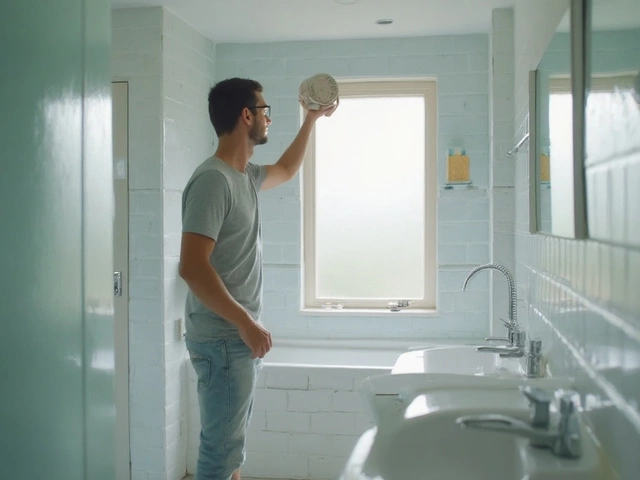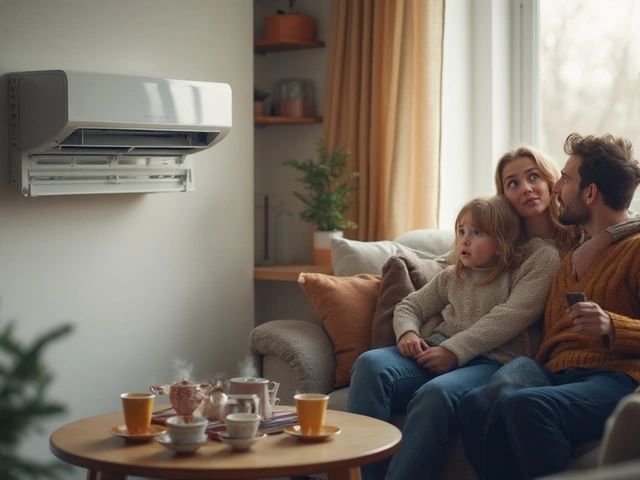Ever notice your kitchen fan coughing up smoke or humming louder than usual? It’s usually a sign that something’s off, but fixing it doesn’t have to mean a pricey callout. Below you’ll find practical steps to tidy up, troubleshoot, and decide when it’s time for a new fan.
First thing’s first – give the fan a good clean. Turn off the power, remove the cover, and brush away grease and dust with a soft brush or an old toothbrush. A vacuum on the low setting helps pull out hidden grime inside the motor housing.
Next, check the filter. Most kitchen extractors have a metal or charcoal filter that traps oil particles. If it looks dark or smells musty, soak it in hot, soapy water for 10‑15 minutes, rinse, and let it dry completely before reinstalling.
While you’re in there, give the fan blades a quick spin by hand. They should turn freely; any wobble or resistance means the bearing might need lubrication or replacement. A few drops of light machine oil on the shaft can smooth things out, but don’t over‑oil – excess can attract more dust.
If the fan still sounds strange after cleaning, listen for buzzes or rattles. A loose motor mounting screw is a common culprit. Tighten any visible screws, but be careful not to strip the heads.
Finally, test the fan on low and high settings. If the speed doesn’t change or the motor overheats quickly, the capacitor could be failing. Replacing a capacitor is a quick DIY job for anyone comfortable with wiring: disconnect power, note the old part’s voltage rating, and swap in a matching new one.
Even the savviest DIYer should know when to step back. If the fan stops working altogether after you’ve checked the basics, the motor itself may be burnt out. Rewinding or replacing a motor isn’t usually worth the hassle unless you have the right tools.
Another red flag is persistent overheating. Modern fans have built‑in thermal protectors, but if those keep tripping, something bigger is wrong – possibly wiring issues or a failing fan controller. Electrical work should be left to a qualified electrician.
Age matters, too. Most kitchen extractors last 8‑12 years with regular care. Look for signs like a cracked housing, corroded wiring, or a motor that hums but never spins. If you spot any of these, factor in the cost of a new fan – often cheaper and more efficient than endless repairs.
When you decide to replace, pick a fan with a similar airflow rating (measured in CFM) so you don’t lose suction. Installing a new fan is straightforward: mount, connect the wiring, attach the filter, and you’re done. Just remember to turn off the circuit breaker before touching any wires.
In short, a clean filter, lubricated bearings, and tight screws keep most fans humming happily. If the motor’s dead, the wiring’s fried, or the fan is past its prime, call in a qualified technician or swap it for a fresh unit. With these tips, you’ll spend less time under a smoky ceiling and more time enjoying a fresh‑smelling kitchen.

Replacing an extractor fan might seem challenging, but with the right tools and some guidance, it can be done efficiently. This guide outlines the process of replacing an extractor fan, from identifying signs it needs replacement to understanding how to choose the right model. Learn practical tips for handling installation and maintaining safety during the project. Make this task more approachable with easy-to-follow steps designed for beginners.

Wondering if it's worth repairing your electric oven or if you should just buy a new one? This article dives into the factors to consider, from cost effectiveness to the age of your appliance, helping you make an informed decision. We'll discuss common issues that can be fixed, when to call in a pro, and some smart tips to extend the lifespan of your oven. By the end, you'll know whether fixing or replacing is the better choice for your situation.

Nobody wants to deal with a stuffy bathroom or smoky kitchen, but if your extractor fan isn’t working, that’s exactly what you’ll get. This article shows you how to check if your extractor fan is doing its job or just taking up space. From simple power checks to quick airflow tests, you’ll learn hands-on methods anyone can use—no tech wizardry needed. Expect practical tips, a couple of helpful tricks, and signs that tell you when it’s time to call an expert. Don’t let stale air hang around: let’s figure out what your fan is up to.

This article breaks down what 'appliance for a job' really means in the appliance service world. It explains common misunderstandings and clarifies whether it refers to equipment or applying for work. The piece gives real-world examples, explores the hiring process for technicians, and shares tips for both customers and job seekers. Straightforward info keeps things practical and easy to follow. If you've ever scratched your head at this phrase, you'll finally get the answer here.

Is your heat pump not blowing warm air? Here’s what causes it and how you can troubleshoot the issue. Easy fixes and tips for a cozy home.

Wondering if you should repair your washing machine or just buy a new one? This article breaks down when it's smart to fix your appliance and when it's better to let it go. Get tips on common washing machine problems, repair costs, and simple troubleshooting steps. Plus, learn how to avoid getting ripped off by price gouging repair techs. If laundry day is starting to look like a coin toss, read this before calling the junk hauler.